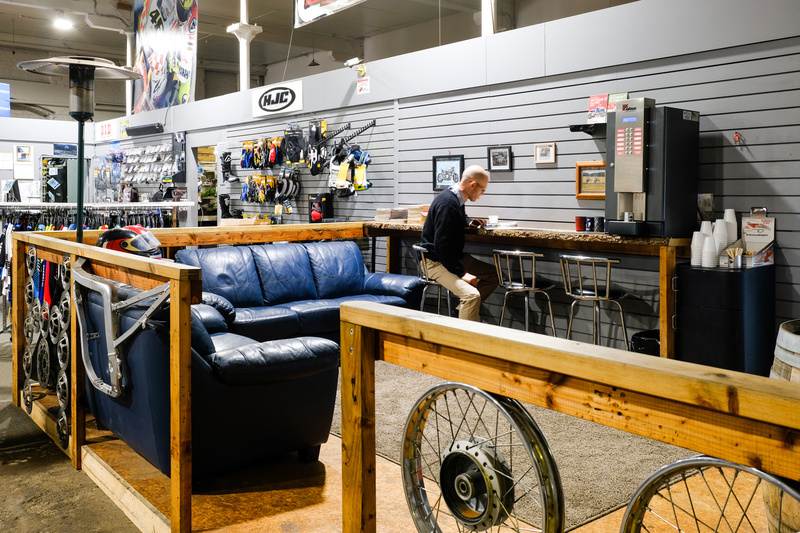Understanding Motorcycle Gears: How to Optimize Your Riding Experience
In the world of motorcycling, grasping the art of gear adjustment is important for boosting your riding efficiency. Effectively using and recognizing bike gears can substantially impact gas, acceleration, and control performance, changing a typical ride into a smooth, electrifying journey. By incorporating precise shift timing and adapting equipment choice to various roadway conditions, riders can ensure optimum engine performance and safety and security. The subtleties of clutch control, throttle coordination, and equipment auto mechanics bid a much deeper exploration, guaranteeing to unlock the full possibility of your device. How can these methods be harnessed to absolutely enhance your riding experience?
Understanding Gear Mechanics
At the core of motorbike dynamics, gear technicians play a pivotal duty in transforming engine power into activity, inevitably determining speed and control. The gear proportions, thoroughly made, establish the connection in between engine transformations and wheel turns, impacting velocity and gas efficiency.
Understanding equipment auto mechanics begins with identifying the value of the transmission, which houses numerous equipments of differing dimensions. These gears communicate through a process recognized as meshing, where teeth of different gears engage to transfer power. The precision of this communication is important; any type of misalignment or damages can result in inefficient power transfer, hindering efficiency. Furthermore, the plan and size of equipments influence the motorbike's ability to manage different lots and speeds.
Moreover, the idea of gear shifting is essential to making the most of efficiency. Smooth and timely changes guarantee that the engine operates within its ideal power band, protecting against unnecessary stress and enhancing long life (motorbike shop). By comprehending these mechanical ins and outs, bikers can attain an unified mix of effectiveness, power, and control, raising their riding experience
Timing Your Shifts
Shift timing mastery is necessary for optimizing motorbike performance and improving the riding experience. Effectively timed shifts ensure that the engine operates within its optimum power band, which is critical for preserving control, achieving smooth velocity, and ensuring the durability of the motorbike. Bikers need to create an intuitive sense of when to change gears, which involves recognizing the partnership between engine revolutions per min (RPM) and speed.
To grasp change timing, pay attention to the engine's noise and feel, as these offer crucial hints concerning when to change gears. When the engine approaches the upper array of its power band without reaching the redline, the perfect change point commonly occurs - motocross gear. Shifting also early can bring about an absence of power, while shifting as well late might create unneeded engine strain
Furthermore, road problems and riding design impact change timing. In contrast, throughout freeway riding, less shifts at greater rates can be a lot more suitable.
Enhancing Fuel Performance
While mastering motorbike gears is essential for efficiency, improving fuel performance is equally vital for both economic and environmental reasons. Optimal gas consumption not only minimizes functional prices yet also reduces the ecological footprint of riding. To achieve this, one have to recognize the intricate relationship between equipment choice and engine performance.
To start with, choosing the ideal gear at ideal speeds can dramatically affect fuel usage. Riding in a higher gear at reduced rates can lead to engine carrying, which is harmful to both gas economic situation his explanation and engine wellness. Conversely, riding in reduced equipments at high rates results in unneeded gas usage. Therefore, keeping an ideal equilibrium by changing gears in alignment with roadway problems and prepared for maneuvers is necessary.
Additionally, routine upkeep plays a critical function in fuel efficiency. Ensuring that the motorbike is well-tuned, with tidy air filters and properly blew up tires, can improve aerodynamics and reduce fuel wastage. Adopting a riding style that welcomes gradual velocity and smooth deceleration can contribute to much better gas economy.

Strategies for Smooth Transitions
Accomplishing smooth gear changes is fundamental to enhancing the riding experience and making sure the longevity of see this page a bike's transmission system. Proper equipment changing not just adds to a smooth trip yet additionally reduces deterioration on the mechanical elements. To understand the art of smooth transitions, cyclists must concentrate on a couple of vital strategies.

Secondly, clutch control plays an essential function. Engaging and disengaging the clutch efficiently calls for technique. The clutch lever should be released slowly, permitting a seamless transfer of power from the engine to the wheels without causing a jolt or sudden activity.

Adapting to Roadway Conditions
Browsing varied roadway conditions is a crucial skill for any kind of motorcyclist aiming to maintain control and security. Whether you're riding on damp surface areas, gravel roads, or navigating doglegs, your capacity to adapt your gear usage and riding method is vital. Comprehending exactly how to adjust your equipments appropriately can substantially influence traction and stability, making sure a more secure journey.
In comparison, when riding on gravel or irregular terrain, lower gears are more effective. Lower gears offer far better control and enable you to respond more quickly to unexpected modifications in the road surface area.
Sharp curves demand specific gear administration to stabilize speed and control. Downshifting prior to getting in a curve can help preserve energy while guaranteeing the motorbike stays secure throughout the turn. Regular technique in varied problems boosts your capability to respond and anticipate to modifications in roadway structure and incline.
Verdict
Grasping bike gears substantially improves the riding experience by boosting fuel, acceleration, and control efficiency. Adjusting equipment choice to different road problems, such as using higher equipments on damp surface areas and lower gears on crushed rock, more improves handling and safety and security.
Recognizing equipment auto mechanics begins with acknowledging the significance of the gearbox, which houses numerous equipments of varying dimensions. These equipments engage through a procedure recognized as meshing, where teeth of different gears involve to transfer power (motorbike shop). Mild adjustments to the throttle throughout equipment shifts can protect against jerky activities and preserve a consistent riding rate
Whether you're riding on wet surface areas, crushed rock roads, or browsing sharp turns, your ability to adjust your gear use and riding method is vital. Adapting equipment choice to various roadway conditions, such as making use of higher equipments on wet surface areas and lower equipments on gravel, more enhances handling and safety and security.